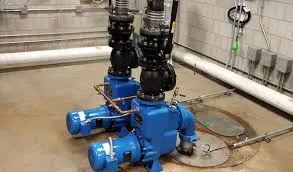Korean
- Afrikaans
- Albanian
- Amharic
- Arabic
- Armenian
- Azerbaijani
- Basque
- Belarusian
- Bengali
- Bosnian
- Bulgarian
- Catalan
- Cebuano
- Corsican
- Croatian
- Czech
- Danish
- Dutch
- English
- Esperanto
- Estonian
- Finnish
- French
- Frisian
- Galician
- Georgian
- German
- Greek
- Gujarati
- Haitian Creole
- hausa
- hawaiian
- Hebrew
- Hindi
- Miao
- Hungarian
- Icelandic
- igbo
- Indonesian
- irish
- Italian
- Japanese
- Javanese
- Kannada
- kazakh
- Khmer
- Rwandese
- Korean
- Kurdish
- Kyrgyz
- Lao
- Latin
- Latvian
- Lithuanian
- Luxembourgish
- Macedonian
- Malgashi
- Malay
- Malayalam
- Maltese
- Maori
- Marathi
- Mongolian
- Myanmar
- Nepali
- Norwegian
- Norwegian
- Occitan
- Pashto
- Persian
- Polish
- Portuguese
- Punjabi
- Romanian
- Russian
- Samoan
- Scottish Gaelic
- Serbian
- Sesotho
- Shona
- Sindhi
- Sinhala
- Slovak
- Slovenian
- Somali
- Spanish
- Sundanese
- Swahili
- Swedish
- Tagalog
- Tajik
- Tamil
- Tatar
- Telugu
- Thai
- Turkish
- Turkmen
- Ukrainian
- Urdu
- Uighur
- Uzbek
- Vietnamese
- Welsh
- Bantu
- Yiddish
- Yoruba
- Zulu
Telephone: +86 13120555503
Email: frank@cypump.com
10월 . 14, 2024 17:36 Back to list
Submersible Sewage Pump Operation Guide for Manual and Efficient System Management
Manual Operation of Submersible Sewage Pumping Systems
Submersible sewage pumping systems play a crucial role in managing wastewater in various environments, including residential, commercial, and industrial settings. These systems are designed to operate underwater, efficiently transporting sewage and wastewater to treatment facilities or septic systems. Understanding how to manually operate a submersible sewage pumping system is vital for maintenance personnel, ensuring the system runs effectively and preventing environmental hazards.
Overview of Submersible Sewage Pumping Systems
A submersible sewage pump is a type of centrifugal pump that is submerged in the sewage water it is meant to pump. This design allows the pump to handle solid waste and debris without clogging, making it ideal for sewage applications. Typically equipped with a motor housed in a watertight casing, these pumps are powered either by electricity or other energy sources.
Components of a Submersible Pumping System
1. Pump The core component that moves the sewage. It consists of an impeller, casing, and motor. 2. Float Switches These devices detect water levels and automatically activate or deactivate the pump based on predetermined thresholds. 3. Check Valve Prevents backflow of sewage, ensuring that water flows in one direction. 4. Discharge Pipe Carries the pumped sewage away from the location. 5. Power Supply Provides the necessary electrical energy for the pump to operate.
Manual Operation Procedure
While submersible pumps are designed for automatic operation, there are scenarios where manual intervention is necessary, such as during troubleshooting, maintenance, or when float switches fail
. Here’s a step-by-step guide on how to manually operate a submersible sewage pumping system.1. Safety First Before any manual operation, ensure that you are wearing appropriate protective gear, including gloves, boots, and goggles. Ensure that the power supply is turned off to prevent any electrical hazards.
'submersible sewage pumping system manual operation and ...'

2. Access the Pump If the pump is submerged in a wet well or pit, carefully remove the access cover. Always check for hazardous gases or odors. Ventilate the area if necessary.
3. Check the System Inspect the pump and its components for any visible signs of wear, blockage, or damage. Ensure that all connections are secure and that the check valve is functioning properly.
4. Manual Operation - Bypass Automatic Controls If the float switch is inoperable, locate the manual override switch, which allows for temporary manual operation of the pump. - Start the Pump Engage the pump by switching it on from the control panel. Monitor the system as it operates to ensure that sewage is being pumped effectively.
5. Monitoring Levels While the pump is running, keep an eye on the water levels in the wet well. If the pump is not keeping up with inflow, be prepared to shut it off to prevent overflow and flooding.
6. Shutdown Procedure Once the necessary tasks are complete or if the pump is struggling, turn off the pump at the control panel. Wait for the pump to come to a complete stop before proceeding.
7. Post-Operation Checks After the manual operation, inspect the pump again for any issues that may have arisen during operation. Clean any debris from the pump and the surrounding area.
8. Documentation Record any observations regarding pump performance, issues encountered, and maintenance performed. This information is valuable for future reference and troubleshooting.
Conclusion
Mastering the manual operation of a submersible sewage pumping system is essential for maintenance personnel tasked with ensuring the efficient and reliable functioning of these critical systems. By following the proper procedures and safety protocols, personnel can effectively manage sewage pumping operations, contributing to a cleaner and safer environment. Regular training and familiarity with the system’s components play a vital role in preparedness, allowing for swift and effective responses to any operational challenges that may arise. Understanding the intricacies of manual operation not only increases operational efficiency but also ensures compliance with environmental regulations, safeguarding public health and the ecosystem.
-
ISG Series Pipeline Pump - Chi Yuan Pumps | Energy Efficiency&Compact Design
NewsAug.03,2025
-
ISG Series Vertical Pipeline Pump - Chi Yuan Pumps Co., LTD.|High Efficiency, Low Noise, Durable
NewsAug.02,2025
-
ISG Series Vertical Pipeline Pump - Chi Yuan Pumps | High Efficiency, Low Noise
NewsAug.02,2025
-
ISG Series Vertical Pipeline Pump- Chi Yuan Pumps Co., LTD.|High Efficiency&Compact Design
NewsAug.02,2025
-
Heavy-Duty Mining Sludge Pumps - Wear-Resistant Slurry Handling
NewsAug.02,2025
-
Horizontal Split Case Pump with GPT-4 Turbo | High Efficiency
NewsAug.01,2025










